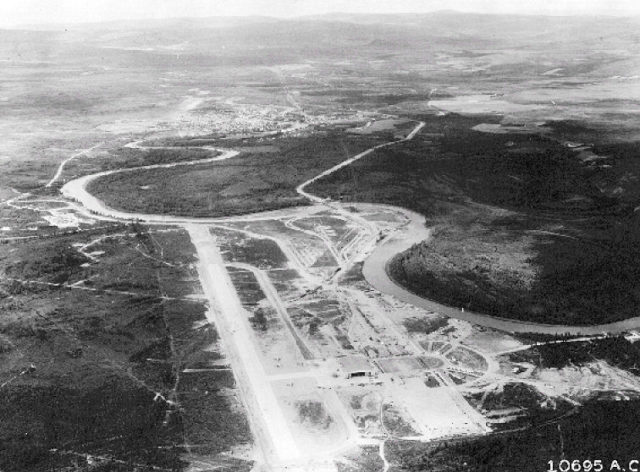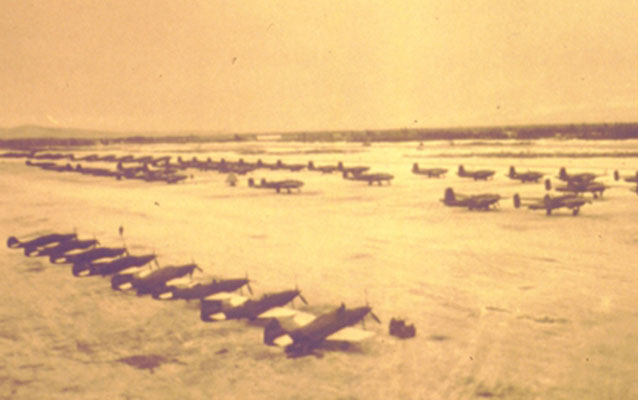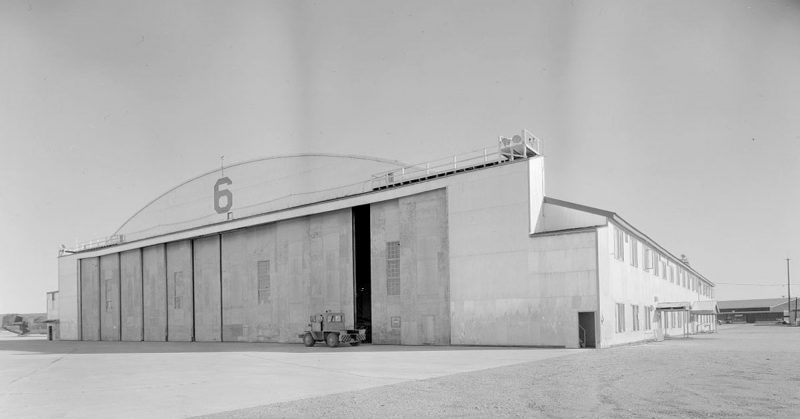What is now known as Fort Wainwright began as Ladd Field, an Army Air Corps cold weather testing facility in Alaska that began operation in September 1940. At that time, all they had was a runway.
Hangar No. 1 was completed in 1941. The three-story building served as the operational headquarters for the base until the 1950s. It was the largest structure in Fairbanks at the time it was built. A large aircraft bay was in the middle of the building. Sliding panels could divide that area in half. Shops and offices ran along the north and south sides of the hangar. A small third-floor office area was under the control tower.
The field was used for testing even before the hangar was completed. Mechanics used movable shelters to gain relief from the cold while working on planes.

Once the US became entangled in WWII, the Army became very concerned about protecting Alaska from invasion. Resources were moved from Ladd Field to more defensively advantageous positions. When Japan attacked Attu and Kiska in the Aleutian Islands in 1942, the Cold Weather Test Detachment (CWTD) was disbanded, and some personnel and equipment were reassigned to Nome because it was anticipated that an attack may occur there. The rest of the personnel and equipment went to the Aleutian Islands. Three pilots and crews from Ladd Field were lost in the Aleutian Campaign.
By the fall of 1942, the chief of the Army Air Corps, Gen. “Hap” Arnold, restarted the CWTD at Ladd Field. It remained a base for CWTD until after WWII.
In 1942, Ladd Field became better known for a new program. The base became a transfer point for aircraft heading to Russia under the Lend-Lease Agreement. 7,296 aircraft were transferred to the Soviets on the Alaska-Siberia Route.

Over the course of the war, Ladd Field grew quickly. By the end of the war, there were several hundred structures. Some were temporary and removed after the war. Others were repurposed as housing in Fairbanks, newsminer.com reported.
There are about 30 structures remaining from the WWII-era. The two runways are still in use as are the commander’s quarters, the officers’ quarters, Hangar No. 1 and other hangars, the North Post Chapel and the post’s radio station. In 1985, these structures were designated a National Historic Landmark.
